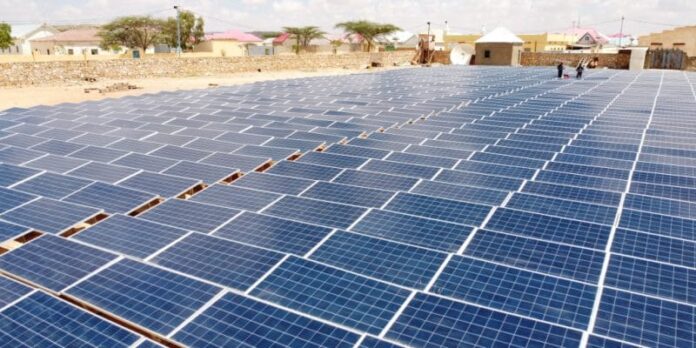By Okoko Chidozie Christian
AS the world population continues to grow, there is an ever increasing demand for energy. Consequently, renewable and clean energy sources are the answers to providing sustainable energy solutions while protecting the planet climate change.
Results of researchers have proven creditably that the take-up of clean energy is not just happening on a national level as countries and cities are creating policies to increase renewable energy use. The more country’s economies drive towards becoming 100% renewable, the more corporations are playing a part by purchasing record levels of renewable power.
According to the UNICEF Sustainability Development Goal, SDG #7 which aims at ensuring access to affordability, reliable, sustainable and modern energy for all; sustainable energy is a critical enabler, and dramatically improves the quality, accessibility and reliability of service that children rely on for their survival, development and well-being.
Renewable and clean energy are the growth sectors as the world moves away from fossil fuels (oil, gas and natural gas etc.), meaning that more opportunities will arise in areas ranging from power generation to power storage. Renewable energy sources now make up over two-third of globally installed power capacity. As an example of this growth, Wednesday 10th June, 2023 marked three years and two months of the United Kingdom, being powered purely by renewable energy for the first time ever. The expertise that comes with developing these next generation power solutions can be of benefit to those that attain it, offering with it work and contracts to those who are slow to take up clean energy.
Having known that fossil fuels (oil, gas and natural gas etc.) are finite resource, it makes enough sense that the future is renewable and it is expected that renewable sources will continue to increase in number, driving down the costs.
As technology and access to renewable and clean energy improve, many countries and economies are embracing their use not only to power homes, schools, hospitals and workplaces but as a viable option for employment and business opportunities. Clean energy can be obtained from a variety of sources which when put together could create solutions for all our energy needs; some of them I will discuss below:
Solar Energy
This is the most abundant of all energy resources and can even be harnessed in cloudy weather. Did you know that the rate at which solar energy is intercepted by the Earth is about 10,000 times greater than the rate at which humankind consumes energy? That means it is impossible for us to exhaust the energy that the sun provides.
Solar energy, as the stemming from the light and heat harnessed from the sea through photovoltaic cells or solar thermal concentration are not only affordable but often the cheapest form of electricity. Solar panels have a lifespan of about 30 years and come in variety of shades depending on the type of material used in manufacturing, study reveals. Although, not all countries are equally endowed with solar energy, but a significant mix from direct solar energy is possible for every country.
Wind Energy
This is actually a byproduct of the sun. The sun’s uneven heating of the atmosphere, the earth’s irregular surface (mountains and valleys), and the planet’s revolution around the sun all combine to create wind. Since, wind is in plentiful supply, it is a sustainable resources as long as the sun’s rays heats the planet.
The technology used to harness the power of wind has advanced significantly over the past 10 years, with the United States of America, U.S.A increasing its wind power capacity by 30% year after year. Wind turbines as they are now called, collect and convert the kinetic energy that wind produces into electricity to help power the grid, meaning that the wind energy harnesses the kinetic energy of moving air by using large wind turbines located on land(onshore) or in sea/freshwater(offshore).
Many parts of the world have strong wind speeds, but the best locations for generating wind power are sometimes remote ones. In this case, offshore wind power offers tremendous potentials.
Nevertheless, this wind energy has been used for millennia, but onshore and offshore wind energy technologies have evolved over the last few years to maximize the electricity produced with taller turbines and large rotor diameter.
Recently, some country’s Department of Energy and Wind Energy Technologies missions has been into funding wind energy research through technology development that will facilitate the de-carbonization of our electric grid and to achieving a robust clean and renewable energy economy.
Hydro Energy/Power
This is a renewable source of energy that generates power by using a dam or diversion structure to alter the natural flow of river or other body of water because it uses water to generate electricity and plants are usually located on a near water source. The energy available from the moving water depends on both the volume of the water flow and the change in elevation- also known as the head from one point to another.
However, as one of the most commercially developed source of clean energy, hydro energy/power is seen as more reliable than either wind or solar. Also, allows for easy storage of what is generated so it can be used in line with demand. Municipal hydro power is also being investigated, meaning that the future could see us all using the flow of water through pipes in our homes to generate electricity.
Geothermal Energy
This is renewable because its source is from natural heat generated and stored deep within the Earth’s core. The Earth’s core contains an incredibly vast amount of thermal energy and some of this energy is one of the few renewable energy technologies that can supply continuous power, and can be found almost anywhere including deep wells in Asia and right at home in our own town and villages. Due to its low emissions, geothermal energy has the potential to play a significant role towards mitigating effects of climate change on our planet.
In conclusion to recover economically, governments across the world should put in place more packages to support homes and industries that are driving economic growth through the energy sources.

























